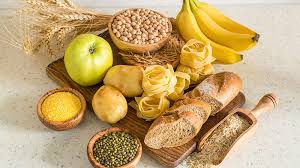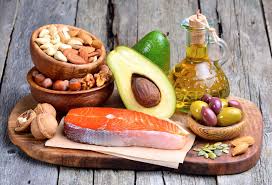Let’s talk about one of the most hyped words in the world of health and nutrition: protein. It’s in
your smoothie, your snack bar, your gym buddy’s 5-pound tub of powder—but what actually is
it?
In short: protein is the MVP of your body’s building team. Think of it as the material your body
uses to build and repair everything—from your muscles and skin to your hair, hormones, and
even your immune system. It’s like the duct tape, scaffolding, and brickwork all rolled into one,
but edible (and tastier). So whether you’re a plant-based eater, a meat-lover, or somewhere in
between, let’s dive into why protein deserves a starring role on your plate.
What Is Protein and Why Do We Need It?
Protein is an essential nutrient that is the building block of bones, muscles, cartilage, skin,
blood, hormones, and enzymes. When you eat protein, your body breaks it down into amino
acids to carry out these functions:
- Build and repair muscles and tissues
- Create enzymes and hormones
- Support the immune system
- Maintain healthy skin, hair, and nails
- Produce blood and connective tissues
- Break down food
- Fluid balance
Amino Acids
Amino acids are the tiny building blocks that link together to form proteins, think of them like
beads on a necklace. There are 20 different amino acids in total, and they fall into three main
categories:
- Essential amino acids (9): Your body can’t make these on its own, so you need to get
them from food. (Histidine, Isoleucine, Leucine, Lysine, Methionine, Phenylalanine,
Threonine, Tryptophan, Valine) - Nonessential amino acids (11): Your body naturally produces these, so you don’t need
to get them from your diet. (Alanine, Arginine, Asparagine, Aspartic acid, Cysteine,
Glutamic acid, Glutamine, Glycine, Proline, Serine, Tyrosine) - Conditionally essential amino acids (7): These are usually made by the body, but
during times of stress, illness, or injury, your body might need a little extra from food to
get enough. (Arginine, Cysteine, Glutamine, Glycine, Proline, Serine, Tyrosine)
Complete vs. Incomplete Protein
- A complete protein is a food source that contains all 9 essential amino acids your body
can’t make on its own. These are typically found in animal products (meat, poultry, eggs,
fish, dairy) and some plant sources like quinoa, soy(tofu, tempeh, edamame), and chia
seeds. - Incomplete proteins lack one or more essential amino acids. Most plant-based sources
(like beans, lentils, nuts, and whole grains) fall into this category. To get all essential
amino acids, combine different plant proteins throughout the day, like rice and beans or
hummus and pita.
How Much Protein Do You Need?
The Recommended Dietary Allowance (RDA) for protein is:
- 0.8 grams per kilogram of body weight, or
- 0.36 grams per pound of body weight
For example, a person who weighs 175 lbs should aim for about 63 grams of protein per day.
Here is a simple calculation (weight (lbs) x 0.36) or you could use the USDA’s protein calculator
to find your exact needs based on age, gender, activity level, and more.
Note: Athletes, pregnant women, and older adults may need more. And while protein is key for
muscle building, more isn’t always better. Too much protein (over 2g/kg of body weight daily)
can strain the kidneys and may increase the risk of certain health issues like heart disease.
When to Eat Protein
The body can only process 20–40 grams of protein at a time. So, it’s best to spread your
intake across the day. Skipping meals? Not a good idea—especially if you’re trying to lose
weight or build muscle. Aim to have 3 meals and 1-3 snacks per day.
Example:
Goal = 63 grams/day
Divide by 3 meals = ~21 grams per meal
Healthy Protein Sources
Here’s what protein looks like in real foods:
Food Serving Size Protein
Fatty fish (salmon, tuna, trout) 3 oz 21 g
Chicken or turkey 3 oz 19 g
Greek yogurt 6 oz 17 g
Cottage cheese 1⁄2 cup 14 g
Cooked beans or lentils 1⁄2 cup 8 g
Milk 1 cup 8 g
Cooked pasta 1 cup 8 g
Nuts 1⁄4 cup 7 g
Egg 1 large 6 g
Aim for lean, whole-food sources and limit those high in saturated fats and added sugars.
Building Muscle? Don’t Overdo It
If you’re aiming to build muscle it’s important to combine adequate protein intake with consistent
strength training. Strength training stimulates muscle growth, while protein provides the building
blocks (amino acids) your body needs to repair and grow muscle tissue.
However, more protein isn’t always better. Consuming excess protein, especially above 2 grams
per kilogram of body weight per day, won’t automatically build more muscle. Your body will
either use the extra as energy or store it as fat. Over time, consistently high protein intake can
also strain the kidneys, elevate blood lipids, and potentially increase the risk of heart disease.
The key? Aim for the right amount, not the maximum and pair it with a balanced diet and smart
training.
The general recommendation for building muscle is:
1.6 to 2 grams of protein per kilogram of body weight per day
(That’s about 0.7 to 1 gram per pound of body weight.)
So, for example:
- A 150-pound (68 kg) person might aim for 110–150 grams of protein daily.
- A 180-pound (82 kg) person might target 130–180 grams per day.
Your exact needs depend on your training intensity, body composition goals, and overall calorie
intake. People doing intense strength training or trying to lose fat while preserving muscle may
benefit from the higher end of that range.
Struggling to meet your protein needs? Supplements can help if you’re falling short. Look for
protein powders that:
- Have <2g saturated fat
- Contain <5g sugar (or use natural sweeteners)
- Have <200 calories per serving
- Avoid trans fats and hydrogenated oils
What does a High Protein Meal look like?
Protein should be included as part of a balanced diet that also features plenty of fruits,
vegetables, and whole grains, it shouldn’t be the sole focus of your plate. To support heart
health, limit saturated fats from red meat and full-fat dairy. Focus on eating plant-based protein
sources like beans, lentils, and soy, or lean options like seafood and poultry.
Meal Ideas:
Breakfast Options:
- Greek yogurt + banana + hard-boiled egg = 19g protein
- Eggs + toast + cottage cheese = 24g
- Veggie omelet + whole grain toast= 25g
- Protein pancakes + greek yogurt + berries= 25 g
Lunch/Dinner Ideas:
- 3 oz chicken breast + 1⁄2 cup rice + veggies = 25g
- Egg & bean burrito + 1 glass milk = 28g
- Lentil soup + quinoa salad = ~22g
Smart Protein Tips
- Combine plant proteins to form a complete protein.
- Balance meals with fruits, vegetables, and whole grains.
- Limit processed meats and high-fat dairy.
- Include fish twice a week for omega-3s.
- Stay within healthy limits to avoid kidney strain or weight gain.
In Summary
Protein is a powerhouse nutrient that your body needs daily. It plays a key role in growth, repair,
and energy. Whether your goal is weight loss, muscle gain, or simply better health, making
thoughtful protein choices can help you thrive.
If you would like more information visit my website…..
Sources:
Piedmont Healthcare – Why Is Protein Important
Harvard T.H. Chan School of Public Health – The Nutrition Source: Protein
Harvard Health – Daily Protein Needs
NASM Blog – Protein for Weight Loss


